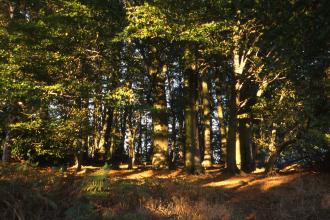Rose End Meadows, Roy Smith

Great crested newt, The Wildlife Trusts

Bluebell, Jim Higham

Common blue, Amy Lewis
Rose End Meadows
Location
Know before you go
Dogs
When to visit
Opening times
Open at all timesBest time to visit
Spring for bluebells and summer for meadows bursting with wild flowersAbout the reserve
This reserve is made up of 16 small fields, none of which has ever been treated with artificial fertiliser or herbicide, making them extremely special.
Each meadow is different because of varying soil quality and depth but together they show how Derbyshire's limestone farmland would have looked around a hundred years ago. In spring and early summer, the meadows are a vivid mixture of yellow, white and blue, because of the wide variety of wildflowers - among them are buttercups, cowslips, cow parsley, bugle and wood anemone.
Bluebells flourish in the woodland and larger meadow in the north east part of the reserve. The main period for orchids is midsummer - among the species found here are pyramidal, bee and common spotted orchids. They share the meadows with other wild flowers, including knapweed, betony and great burnet. The abundance of flowers attracts large numbers of insects, especially bees and butterflies, including the brown argus butterfly.
For birdwatchers there is plenty to see all year round, including greenfinch, mistle thrush, chaffinch, goldfinch and nuthatch, but the main attraction is the winter visits of the hawfinch. Among the fields are several old lead spoil heaps, a legacy of the area's lead mining past. Here you will find spring sandwort and alpine pennycress, both nationally important wild flowers.
The two dewponds were traditionally used for cattle but are now fenced and provide an important refuge for the great crested newt.
Species
Contact us
Environmental designation
Nearby nature reserves
Download our nature reserve leaflets
Check out the reserve map
Rose End Meadows reserve map
Play Wild rating
Play Wild all year round but beware of mine shafts.


